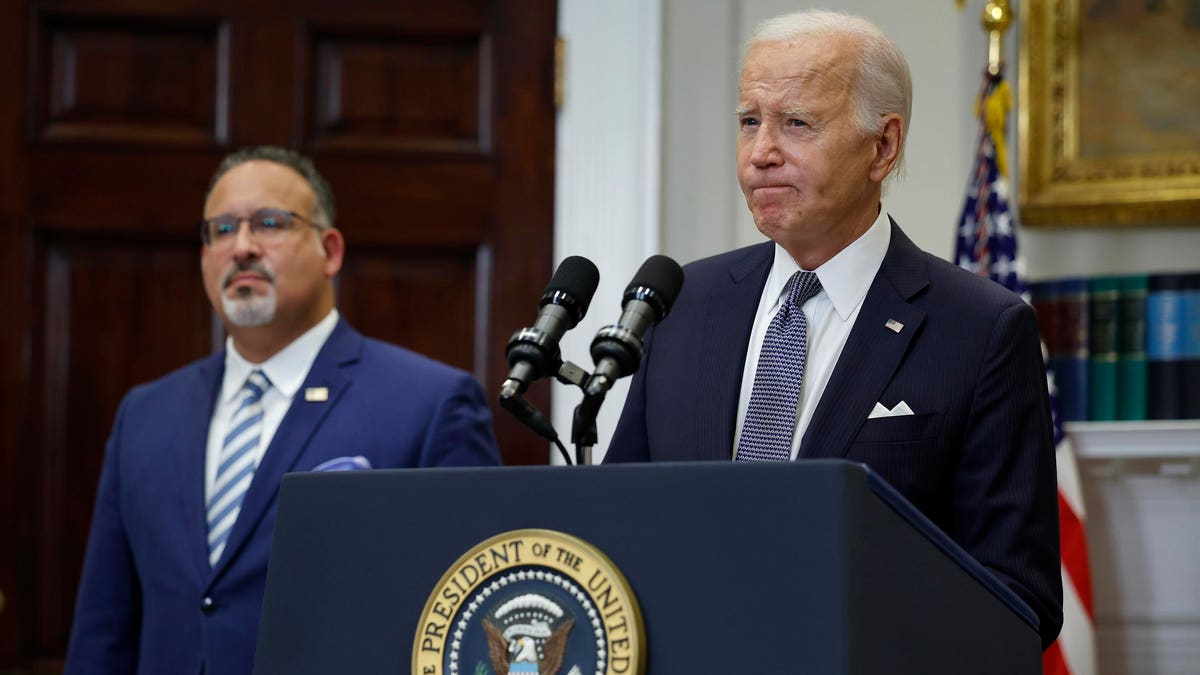Student loan payments are resuming, and time is running out.
Millions of borrowers are only days or weeks away from having a student loan payment due for the first time in years. For over 40 months, the Covid-era student loan pause suspended most federal student loan payments and froze interest, resulting in unprecedented student debt relief. But Congress passed federal spending legislation earlier this year that mandated the end of the moratorium. Student loan payments have started up again, and the first payments are due in October.
While student loan repayment has resumed, borrowers have a wide array of options to lower or even eliminate their monthly payments. Here’s a breakdown.
Explore Student Loan Forgiveness Options
The best way to lower your payments would be to eliminate the debt altogether through student loan forgiveness. The Biden administration is implementing a variety of student loan forgivness initiatives, approving over $117 billion in debt cancellation even in the face of last summer’s Supreme Court decision striking down Biden’s signature student debt relief plan. These initiatives include the following:
Change Student Loan Repayment Plans To A Longer Term
One option for borrowers to lower their student loan payments is to extend the timeframe for repayment. Most federal student loans are automatically placed on a 10-year Standard plan, requiring full payoff of the loan over a decade. Borrowers with student loan balances that exceed $30,000 can extend their repayment term to 25 years, resulting in lower monthly payments. However, borrowers on extended plans would pay more in total over time due to prolonged interest accrual.
Switch To An Income-Driven Repayment For Lower Payments And Eventual Student Loan Forgiveness
Borrowers who are unable to afford their monthly payments under a Standard or Extended repayment plan may want to consider Income-Driven Repayment, or IDR. IDR plans tie student loan payments to a borrower’s income and family size, potentially resulting in a more affordable bill. IDR payments are recalculated every 12 months, and any remaining balance would be forgiven after 20 or 25 years, depending on the plan.
The Biden administration recently unveiled the SAVE plan, a new IDR option that the administration is claiming is the most affordable student loan repayment plan ever. A million lower-income borrowers may have a $0 monthly payment under SAVE, and others may see their student loan payments cut by 50% or more. And SAVE also features an interest subsidy that will waive interest accrual that exceeds a borrower’s monthly payment — a potentially huge benefit.
Recalculate IDR Payments Based On Changed Circumstances
Borrowers who are already in an IDR plan may want to explore requesting a recalculation of their payments if their financial circumstances have changed since their last income recertification. While IDR payments are recalculated every year, borrowers can request a recalculation at any point. And if your last federal tax return is not reflective of your current earnings, you can use alternative documentation of income, such as a pay stub.
Explore Filing Taxes Separately From Your Spouse
For married borrowers, IDR plans will consider the combined income with your spouse, but only if you file taxes jointly. Under all current IDR plans, including the new SAVE plan, borrowers can exclude spousal income by filing taxes separately. This may have significant benefits for borrowers. Notably, SAVE is replacing REPAYE, an older IDR plan that always factored in a spouse’s income regardless of marital tax filing status.
However, filing taxes separately can sometimes result in higher taxes. So married borrowers should explore their options in consultation with a qualified tax advisor.
Look Into Deferment Or Forbearance Options
Borrowers can postpone student loan payments through a deferment or forbearance. These programs suspend payments temporarily while keeping the loan in good standing. However, interest would still accrue on the loans. And deferment and forbearance may not count toward student loan forgiveness plans (new regulations that went into effect on July 1 allow certain, but not all, deferment and forbearance periods to potentially count toward PSLF).
Borrowers applying for student loan forgiveness because they believe they meet the qualifications for discharge — such as borrowers who have been notified that they qualify for loan forgiveness under the IDR Account Adjustment, or borrowers who have reached the 120-payment threshold for loan forgiveness under PSLF — can request a forbearance while their student loan forgiveness is processed.
Take Advantage Of Biden On-Ramp
The Biden administration announced a 12-month “on-ramp” initiative. During the next year, the Education Department says that borrowers who miss payments on their government-held federal student loans will not be reported as delinquent, and will not be placed in default. The missed payments will be retroactively converted to a forbearance, keeping the student loan in good standing.
However, as with many other deferments and forbearances, missed payments will not count toward student loan forgiveness under the IDR and PSLF programs. And interest will still accrue.
Refinance Student Loans To Get Better Terms
Borrowers can explore refinancing their student loans through another lender to lower their interest rate and get more favorable repayment terms. This can be particularly useful for higher-interest student loans.
However, refinancing federal student loans via a private loan program carries enormous risks. By refinancing a federal student loan into a private loan, a borrower would be walking away from the entire federal student loan system and associated programs and benefits including IDR, flexible repayment plan options, and the possibility of student loan forgiveness.
Further Student Loan Forgiveness Reading
Biden Administration Announces $72 Million In Student Loan Forgiveness
Timeline For Biden’s New Student Loan Forgiveness Plan Gets Clearer
Student Loan Forgiveness Update: ‘Targeted’ Initiatives Continue, But Threats Loom
There’s Still Time To Qualify For Student Loan Forgiveness Under Adjustment
Read the full article here













